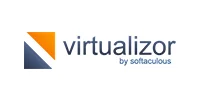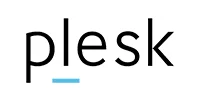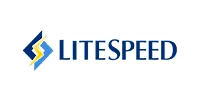Hosting services with real-time fast performance?

Future Challenges and Trends in OJS Development
Open Journal Systems (OJS) serves as a connecting force for researchers, editors, and readers in the changing world of scholarly publication. Given the increasing hype of OJS for academic journals, the OJS development and the online journals have increased too. So here, let’s take a glance at the trends in OJS development. That encompasses enhanced user interfaces, AI integration, open access advocacy, plugin innovation, theme customization, and more. All are collectively shaping a dynamic future for scholarly publishing.
The course of OJS’s growth is driven by a delicate interplay between difficulties and trends as the digital landscape continues to change. The journey into OJS’s future asks us to investigate the promising new directions for advancement and the possible hurdles in our way. This investigation goes into the interplay between upcoming difficulties and changing patterns in OJS development, showing the dynamic route in front of us.
Trends in OJS Development
Enhanced User-Centric Interfaces
The user interface is composed to take center stage in OJS development. The trend leans toward creating intuitive interfaces that satisfy both seasoned researchers and newcomers. This involves reforming the submission process, improving navigation, and optimizing mobile responsiveness. However, the importance of user-centric design must be considered. Users, including authors, reviewers, editors, and readers, interact with the OJS theme daily. Ensuring smooth, intuitive, and efficient interactions can significantly improve the user experience.
In addition to these general enhancements, two specific trends within OJS development get attention: OJS plugin development and OJS theme development.
OJS Plugin Development
OJS’s extensibility through plugins has been a game-changer in its evolution. Plugins can customize and extend OJS’s functionalities without altering the core codebases. This trend is set to continue, with a growing emphasis on developing plugins. That addresses specific pain points within the scholarly publishing workflow. However, these plugins can range from advanced submission validation tools to automated metadata extraction modules.
The power of plugins lies in their adaptability to various journal needs. Therefore, developers will focus on creating plugins as the scholarly publishing landscape diversifies. Those meet the different disciplines, ranging from social sciences to natural sciences. This diversification ensures that OJS remains a versatile platform that can meet the different requirements of various journals.
OJS Theme Development
The visual identity of a journal is often the first impression it makes on readers and potential authors. OJS theme customization plays a key role in creating this identity. OJS theme development is emerging as a significant trend, allowing journals to have a separate and visually attractive online presence.
Theme development goes beyond aesthetics. It involves creating responsive designs that provide an optimal reading experience across various devices. Additionally, OJS themes must be designed with convenience in mind. Therefore, it ensures that content is available to all users, including those with disabilities. So this aligns with the broader movement toward inclusive design in technology.
Moreover, OJS theme development is not limited to journal publishers alone. Service providers and developers are recognizing the demand for pre-designed, customizable themes that journals can choose from. This approach simplifies the process for journals with limited resources or technical expertise.
Integration of AI and Automation
Integrating Artificial Intelligence (AI) holds huge potential for OJS development. From automating peer-review processes to offering content recommendations based on user preferences, AI can increase efficiency and personalize user experiences. Moreover, AI-powered tools can help find suitable reviewers, detect potential plagiarism cases, and even suggest relevant articles for readers based on their past interests.
Automation, when applied thoughtfully, can significantly reduce manual administrative tasks. It allows editors and reviewers to focus on higher-value activities. However, developers must step carefully to confirm that the human element in the editorial and review processes is not compromised. However, the goal is to enhance, not replace, human expertise.
Open Access Advocacy
The global shift toward open-access publishing is one of the trends in OJS developments. Taking open access not only extends the reach of research but also raises collaboration and innovation. Therefore, developing tools that easily integrate with open-access models is important.
Developers can focus on creating features that support various open access models, such as author-pays, institutionally-funded, or community-supported approaches. This might involve building integrations with repositories. It facilitates easy data sharing and confirms compliance with open-access mandates.
Furthermore, as the open-access movement gains momentum, developers should explore ways to simplify migrating from traditional subscription models to open-access frameworks. Therefore, this transition involves technical considerations and financial and organizational changes that need to be managed effectively.
Enhanced Analytics and Reporting
In the data-driven decision-making age, journals increasingly rely on analytics to understand user behavior. OJS developers are focusing on increasing the analytics and reporting capabilities of the platform. This includes providing journal editors with comprehensive insights into article views, downloads, citations, and reader engagement.
By joining the power of data, journals can refine their strategies, improve content discoverability, and better serve their audiences.
Interoperability and Integration
Collaboration and information exchange between different scholarly platforms and tools, including OJS Hosting are becoming important. OJS developers are working on improving interoperability. It allows the OJS theme to integrate smoothly with other systems, repositories, and databases. This trend allows updated data sharing, reduces risks, and improves the visibility of scholarly content. Therefore, it significantly increases the discoverability and credibility of articles.
Mobile-First Approach
Mobile-friendliness is not restricted to trends in OJS development but in all types of web design and web development. As mobile devices become the primary medium for accessing information, OJS developers are taking on a mobile-first approach. It involves designing interfaces and functionalities optimized for mobile devices without giving in to the desktop experience. From responsive design to mobile-friendly submission processes, this trend ensures that users can engage with scholarly content seamlessly, regardless of their device.
Enhanced Reviewer and Author Collaboration Tools
Collaboration between authors, reviewers, and editors is vital for peer review. OJS developers are focusing on creating tools that facilitate efficient communication and interaction. That includes real-time commenting, collaborative editing, and transparent communication channels. However, these tools update the review process and raise a sense of community among researchers.
Accessibility Compliance
Digital accessibility is a pressing concern, confirming that scholarly content is available to all individuals, including those with disabilities. OJS developers bring into line with accessibility standards (such as WCAG) to confirm that the platform is usable by everyone. This trend involves implementing features like alt text for images, keyboard navigation support, and compatibility with screen readers. By prioritizing accessibility, OJS developers contribute to inclusivity in scholarly communication.
Blockchain for Transparency and Authenticity
Blockchain technology is finding applications in various industries, and scholarly publishing is no exception. OJS developers are exploring the use of blockchain to improve transparency, authenticity, and attribution in the publication process. Blockchain can employ timestamp articles, verify authorship, and provide an immutable record of revisions. This trend addresses concerns around plagiarism, authorship disputes, and data integrity.
Gamification of Review and Engagement
Some OJS developers experiment with gamification elements to incentivize reviewer participation and reader engagement. Online gamification plugin involves joining game-like elements, such as badges, leaderboards, and rewards, into the reviewing and reading experience. This trend seeks to make scholarly involvement more engaging and rewarding.
Global Collaboration and Multilingual Support
This trend involves increasing multilingual support within the platform, allowing journals to publish content in multiple languages. Furthermore, collaborative translation tools and automated language services are being integrated to bridge language barriers. So it facilitates knowledge distribution on a global scale.
Continuous Integration and Deployment
Continuous integration and deployment (CI/CD) practices are gaining fame in software development. OJS developers are adopting CI/CD pipelines to ensure a more agile and efficient development process. However, this trend involves automating testing, integration, and deployment processes, leading to faster feature releases, bug fixes, and updates. CI/CD ensures that OJS remains up-to-date and resilient in a rapidly changing digital landscape.
The trends shaping OJS development are varied and forward-looking. By taking up these trends, OJS developers can address the challenges of the digital era while increasing accessibility, collaboration, and the dissemination of knowledge. As OJS continues to adapt and innovate, it will remain a cornerstone of the academic publishing landscape.
Navigating Future Challenges in OJS Development
We meet a landscape full of opportunities and challenges as we look into the horizon of Open Journal Systems’ (OJS) development. Two noticeable aspects that permit close attention are OJS plugin development and theme development. In this search, we will look at the challenges developers might face while crossing these domains. How can these challenges be transformed into stepping stones for progress?
OJS Plugin Development
OJS plugins are the building blocks that improve the functionality and features of the platform. So they provide a way to tailor OJS to specific journal needs without altering its core architecture. Yet, as the need for customization grows, challenges arise:
- Compatibility Problems: As OJS evolves, maintaining compatibility between plugins and the platform’s versions becomes paramount. The challenge lies in ensuring plugins seamlessly integrate with the latest OJS duplications. However, it allows journals to benefit from new features while still using their customized functionalities.
- Quality Assurance in a Diverse Ecosystem: OJS is used by journals spanning diverse disciplines, each with unique requirements. Guaranteeing plugin quality across this varied ecosystem becomes a challenge. So developers must carefully test plugins across different scenarios to guarantee they work seamlessly for all journals.
- Long-Term Sustainability: Plugins can become outdated as technology evolves. Therefore, developers face the challenge of maintaining and updating plugins over time to keep them secure, efficient, and aligned with emerging trends. The important factor is a balance between innovation and sustainability.
OJS Theme Development
Themes are pivotal in establishing a journal’s visual identity and user experience. However, challenges loom on the path of theme development:
- Responsive Design Complexity: In an era led by various devices, creating responsive themes across desktops, tablets, and smartphones is essential. The challenge is making designs that adapt seamlessly to many screen sizes while maintaining usability and aesthetics.
- Accessibility and Inclusivity: Designing themes accessible to all users, including those with disabilities, poses a challenge. However, developers must ensure compatibility with screen readers, proper color contrasts, and keyboard navigation to provide an inclusive experience.
- Balancing Aesthetics and Performance: Balancing visually appealing themes and optimal performance can be challenging. Themes loaded with complex design elements might slow down page loading times. Therefore, it impacts user satisfaction. Developers need to find the sweet spot between aesthetics and speed.
In the dynamic realm of Open Journal Systems (OJS) development, challenges often appear as key points of growth and transformation. These challenges, while sometimes scary, possess the potential to shape the future of scholarly publishing by inspiring innovative solutions.
Navigating Compatibility Complexities
With a keen eye toward OJS development, we delve into the complexities that arise. OJS’s evolution is marked by its continuous development, with new features and improvements introduced regularly. However, this evolution introduces a challenge: maintaining compatibility between existing plugins and themes and the latest OJS versions. As OJS’s core codebases transform, developers must ensure that plugins and themes integrate with the platform’s latest iterations.
This challenge calls for a gentle balance. Developers need to provide timely updates for plugins and themes. Therefore, it makes them compatible with newer OJS versions while ensuring backward compatibility for users who still need to be ready to transition. It requires careful testing, collaboration, and communication among developers, users, and the broader OJS community.
Longevity and Sustainability
As the landscape shifts, the need for sustainable development practices comes into focus. OJS plugin and theme development don’t end with their initial creation; it’s an ongoing journey. Therefore, plugins and themes require maintenance, updates, and improvements to stay relevant and effective. Yet, the challenge lies in ensuring their longevity and sustainability in a fast-paced technological landscape.
Developers must address how to balance innovation with maintaining existing functionalities. Abandoning outdated plugins and themes could disrupt journal operations, but excessively clinging to the past can hinder progress. This challenge requires a strategic approach involving phased transitions. Clear communication with users and fostering a culture of adaptability can be easy.
User-Centric Design: The Balancing Act of User Experience
Ensuring a user-centric experience presents both opportunities and challenges. As OJS evolves, ensuring a seamless and user-friendly experience becomes paramount. While the goal is to empower users with intuitive interfaces, customization, and ease of use, the challenge includes balancing advanced features and simplicity.
Developers must anticipate user needs and preferences, streamline complex processes, and offer manageable customization options. User feedback becomes a treasure trove. That guides developers toward creating interfaces that align with the diverse requirements of authors, reviewers, editors, and readers. Finally, achieving this equilibrium requires an ongoing commitment to understanding user journeys and refining design choices.
Security in the Digital Age
The digital transformation of scholarly publishing brings an urgent challenge: security and data privacy. OJS handles a vast amount of scholarly data. This makes it a potential target for cyber threats. However, the challenge is maintaining robust security measures while preserving the platform’s openness and accessibility.
Developers must implement encryption, authentication, and authorization mechanisms to safeguard sensitive information. Lastly, balancing the need for secure transactions and protected user data with the demand for transparency and openness in scholarly communication requires innovative solutions prioritizing security and accessibility.
Accessibility for All
In an increasingly digital world, the challenge of accessibility gains significance. Digital content, including scholarly publications, must be accessible to everyone, including individuals with disabilities. In addition, this requires understanding the standards and guidelines and ensuring all users can engage with content regardless of physical abilities.
The challenge lies in implementing these practices and fostering a culture of accessibility awareness integral to the development process. The way forward becomes clearer as we stand at the intersection of challenges and innovation.
Transforming Challenges into Opportunities: The Way Forward
Facing challenges is not just a test of our abilities; it’s an invitation to innovate, collaborate, and grow. Emerging challenges can catalyze transformative change in the realm of Open Journal Systems (OJS) plugin and theme development
Let’s explore how these challenges can be connected to fuel innovation and foster positive change.
Collaborative Development Communities
When developers, journal managers, and users collaborate, the result is often a synergy of insights that can address compatibility and quality assurance challenges. The OJS ecosystem prospers on collective problem-solving. Establishing open communication channels, such as forums, mailing lists, or developer meet-ups, encourages knowledge sharing and provides a platform for collaboratively addressing challenges.
Through these communities, developers can gain a deep understanding of the diverse needs and contexts in which plugins and themes are used. Feedback loops allow for fast improvement. Therefore, it enables developers to fine-tune their creations based on real-world usage scenarios.
However, this collaborative approach improves the quality of plugins and themes and fosters a sense of ownership among users who feel heard and valued. Additionally, the journey of continuous learning becomes an integral part of transforming challenges into opportunities.
Continuous Learning and Adaptation
The world of technology is in perpetual flux, and OJS developers are at the forefront of this dynamic landscape. Embracing challenges involves a commitment to continuous learning. However, developers can proactively anticipate potential challenges by staying informed about emerging trends in OJS development, tools, and best practices. They equip themselves with the knowledge needed to overcome them.
Online courses, workshops, webinars, and developer conferences are valuable resources that empower developers to stay ahead. However, by expanding their skill sets and understanding evolving technologies, developers can address current challenges and position themselves to foresee and lessen future obstacles. This approach turns challenges into opportunities for skill enhancement and professional growth.
Moreover, sustainability and community support are vital in transforming challenges into long-term success.
Sustainability through Community Support
Ensuring the sustainability of plugins and themes over time is a challenge that joints on community involvement. Open-source development relies on a thriving community of contributors, and fostering this community is key to transforming challenges into long-term successes. Lastly, developers can encourage collaboration by providing clear documentation, well-defined contribution guidelines, and a welcoming environment for newcomers.
A robust community not only assists in maintaining and updating plugins and themes but also introduces fresh perspectives and innovative solutions. The community’s collective effort ensures that essential components of OJS development remain relevant and effective. It addresses challenges proactively. Developers empower the community to drive sustainability and development by raising a sense of shared ownership.
User-Centric Design
Balancing aesthetics and functionality in theme development can be a challenge. However, by prioritizing user-centric design principles, developers can transform this challenge into an opportunity for innovation. By gathering user feedback, conducting usability tests, and analyzing user behavior, developers can craft themes that resonate with the needs and preferences of users.
Furthermore, accessibility isn’t just a challenge—it’s a moral imperative. Developing themes that are accessible to all individuals (including those with disabilities) opens up new avenues for impact. By following accessibility standards and guidelines, developers ensure that scholarly content reaches a wider audience. Therefore, they align with the inclusive values of academia.
Additionally, the Trends in OJS development, challenges, and opportunities pile together to shape a brighter future.
Conclusion
Challenges in the ever-evolving OJS plugin and theme development landscape aren’t barriers to progress; they are stepping stones toward innovation and growth. As developers and stakeholders approach these challenges, the result is a platform that embodies adaptability, inclusivity, and user-centered excellence.
By taking up challenges as invitations to learn, collaborate, and create, OJS development charts a course toward a scholarly publishing landscape that is dynamic, accessible, and forward-thinking. In transforming challenges into opportunities, OJS emerges as a cornerstone of the academic world, built on the foundation of innovation and collective effort.
With these trends in mind, it’s evident that OJS development is not just about coding and features; it’s about building a platform that empowers the academic community to disseminate knowledge effectively in an ever-changing digital era. However, as developers and stakeholders work in tandem, trends in OJS development will continue to play a central role in the future of scholarly communication.













